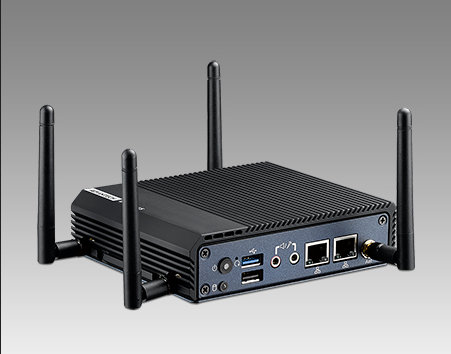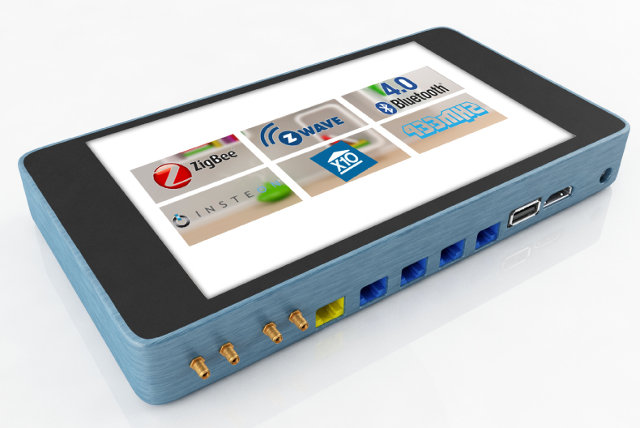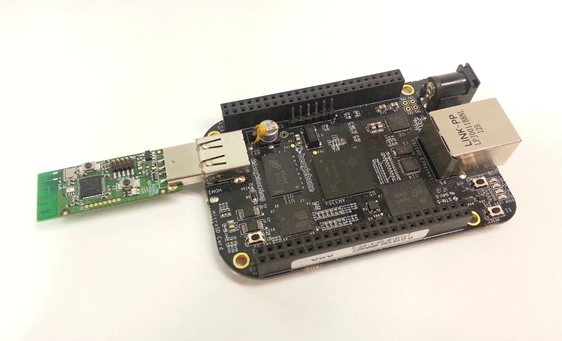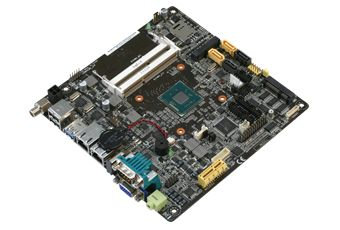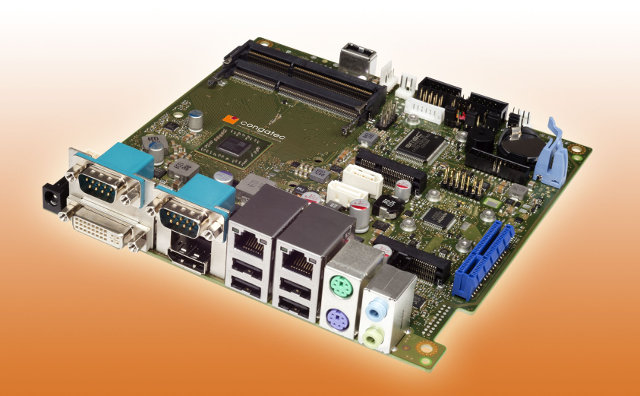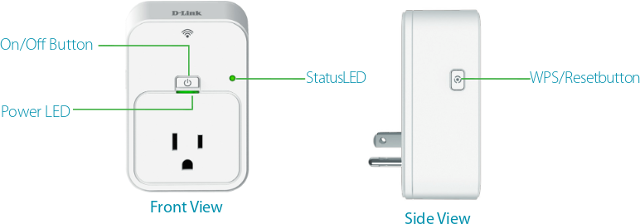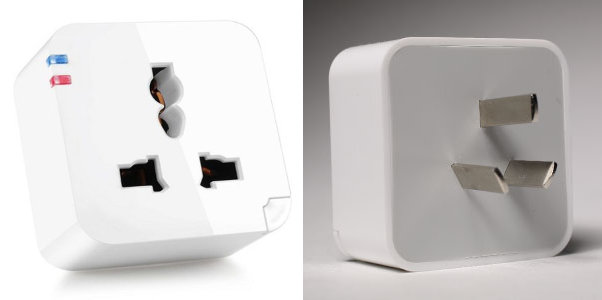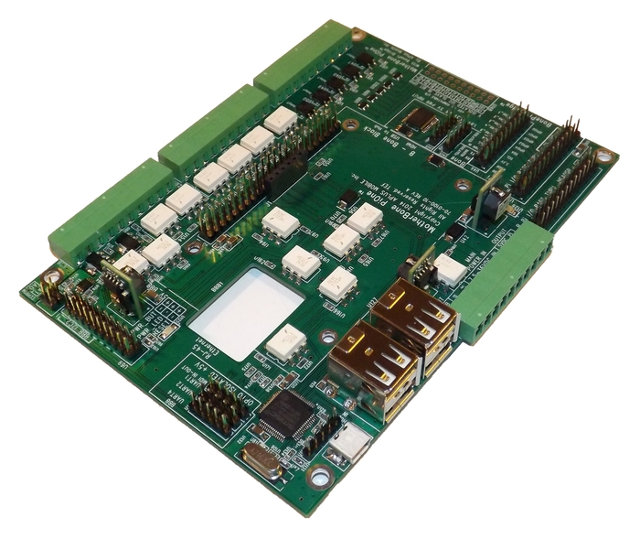Advantech UTX-3115 is a rugged low power fanless computer powered by Intel Atom “Bay Trail-I” E3826 dual core processor and lots of various ports that can be used as a digital signage, for machine or factory automation, & “smart IoT gateway”, and that happens to be supported by Intel’s Intelligent Systems Framework (ISF). Before checking out Intel ISF, let’s go Advantech UTX-3115 hardware specifications: SoC – Intel Atom E3826 dual core processor @ 1.46 GHz with 1MB L2 cache and Intel HD graphics. System Memory – 2 x 204-pin SO-DIMM DDR3 1333/1066MHz, up to 16GB Storage – 2.5″ bay for HDD or SSD storage Video Output 1x HDMI up to 1080p60 1x micro HDMI up to 1080p60 1x VGA up to 2560 x 1600 @ 60Hz Dual channel LVDS up to 1920 x 1200 @ 60Hz (shared with micro HDMI) Connectivity – Dual Gigabit LAN (LAN1: Intel I210AT, LAN2: Realtek […]
Soap is a Touchscreen Enabled Router Supporting Gigabit Ethernet and Lots of Wireless Standards (Crowdfunding)
Soap is a strange creature, and I’m not convinced there are that many use cases for such hardware, but I find it interesting that the developers decided to pack a Freescale i.MX6 Solo/Dual or Quad SoC powered Android 4.4 tablet and a router supporting five Gigabit Etherner ports, as well as WiFI 802.11ac, Wi-0Fi 802.11 b/g/n, Zigbee, Z-wave, Bluetooth 4.0 (BLE), Insteon RF, X10, 433Mhz, NFC, and infrared into one and only device which they call an “Intelligent Home Management Hub”. It’s also complete with an HDMI output port so that you can use it as a media player. Let’s go through the specifications for the four version this little monster (Soap Solo, Soap Dual, Soap Quad, and Soap 8.4): SoC Soap Solo – Freescale i.MX6 Solo single ARM Cortex A9 @ 1 GHz with Vivante GC880 3D GPU Soap Dual – Freescale i.MX6 Dual dual ARM Cortex A9 @ […]
Texas Instruments Releases Zigbee Home Automation Gateway Reference Design Based on BeagleBone Black
Texas Instruments has recently release a complete Linux based Zigbee home automation gateway based on BeagleBone Black development and CC2531 Evaluation Module Kit hardware which you can purchase for about $100 in total, and including Z-STACK Ubuntu gateway installer, as well as Z-STACK Home, a ZigBee Home Automation (ZHA 1.2) compliant protocol stack for the company’s CC2530 and CC2538 SoCs. I won’t go into details about the BeagleBone Black as I have already covered it into details previously. However, the hardware has slightly changed since the initial release, as the 2GB eMMC has now been replaced by a 4GB eMMC, and price has been increased to about $55. CC2531 evaluation module kit is comprised of CC2531 USB Dongle which you can connect to the USB port of a PC, or in this case a BeagleBone Black, for 802.15.4 / ZigBee applications. TI also provides CC2531 USB Firmware Library on their site to let developers […]
Aaeon Announces CoMs, 3.5″ & mini ITX Embedded Boards Powered by Intel Bay Trail Processors
AAEON has announced the release three embedded boards and modules based on Intel Celeron J1900, N2930, N2807 and Atom E3800 series processors, which are all part of Intel’s low power Bay Trail family. EMB-BT1 is s mini-ITX board powered by Intel Atom 3825 or 3845, Gene-BT05 is a 3.5″ industrial board also based on Atom 3815/3815 or Celeron N2930 processors, and COM-BT is a series of COM Express type 6 computers-on-module. EMB-BT1 mini-ITX Board EMB-BT1 is a fanless board designed for digital signage, POS, Kiosk and networking applications among others, with the following key features: SoC – Intel Atom E3825 with 2 cores @ 1.33 GHz (TDP: 6 W) or Atom E3845 with 4 cores @ 1.91 GHz (TDP: 10W) System Memory – DDR3L-1066 MHz (3825) or DDR3L-1333 MHz (3845) Storage – Up to 2x SATA 6.0Gb/s, 2x SATA 3.0Gb/s Display – 1x VGA, 1x HDMI, 1x LVDS with dual […]
Congatec Unveils conga-IGX Industrial mini-ITX Boards Powered by AMD G-series SoC
Congatec has recently introduced three new industrial Mini-ITX motherboards powered by dual and quad AMD Embedded G-Series SoCs, namely GX-210HA, GX-217GA, and GX-420CA, all integrated Radeon HD graphics. The company’s conga-IGX embedded motherboards are said to be particularly suited for cost-sensitive visualization and control applications. Congatec conga-IGX specifications: SoC AMD Embedded GX-210HA (2 x 1.0 GHz, L2 cache 1MB, 9 W) with AMD Radeon HD 8210E graphics @ 300 MHz AMD Embedded GX-217GA (2 x 1.65 GHz, L2 cache 1MB, 15 W) with with AMD Radeon HD 8280E graphics @ 450 MHz AMD Embedded GX-420CA (4 x 2.0 GHz, L2 cache 2MB, 25 W) with with AMD Radeon HD 8400E graphics @ 600 MHz System Memory – 2x SO DIMM Socket (1.5V / 1.35V), for up to 16GB single Channel DDR3-1333 (CL9) / DDR3-1600 (CL11) SDRAM, unbuffered, no ECC Storage – 1x mSATA (SATA-III), 2x SATA connectors Connectivity – 2x […]
DLink Introduces DSP-W215 Wi-Fi Smart Plug for iOS and Android
D-Link is entering the automation market with a Wi-Fi smart plug (Model DSP-W215) that configurable via WPS, allows you to control and monitor your electrical appliance via Android 4.0+ and iOS6+ mobile devices, and it even has an overheating protection mechanism that can apparently detect if the plug or the device itself overheats. Let’s go through the technical specifications: Wi-Fi – IEEE 802.11n (According to pictures found via FCC filings, the chipset is Atheros AR1311_AL1A) Misc – Power / Status LEDs, On/Off button Dimensions – 9 x 6.10 x 3.56 cm (3.54″ x 2.40″ x 1.40″) Weight – 125 g (4.41 ounces) Power Input – 100 to 125 V AC / 5W maximum power consumption Temperature Range – Operating: 0 to 40 °C, Storage: -20 to 65 °F Humidity – Operating: 10% to 90% non-condensing, Storage: 5% to 95% non-condensing Based on these specs, since it can only work between 100 […]
Kankun KK-SP3 is a $20 Wi-Fi Smart Socket for Android and iOS
I’ve already featured Broadlink SP1 and SP2 smart socket on this blog. The former is a simple Wi-Fi smart socket for Android and iOS, and the later adds support for motion sensing and energy monitoring. They cost respectively about $30 and $45 including shipping. I’ve discovered another cheaper option with Kankun KK-SP3 via DealExtreme ($23.75), but it can also be found on Aliexpress for as low as $19.99 including shipping. If you live in China, It’s available on Taobao for 99 RMB ($15.82). Here are the specs of this smart socket: Power Plug – Three flat-pin plug (Australia type) Wi-Fi – 802.11 b/g/n, 15 dbm. Texas Instruments Wi-Fi module (CC3000?) Input Voltage – 90~265V @ 50-60 Hz Output Current – 10A Maximum Power – 2200W Dimensions – 5.3 cm x 5.3 cm x 2.8 cm Temperature Range – -10 to 55°C Unless you live in Australia, China, Argentina, New Zealand, […]
MotherBone PiOne is a 3.5″ Industrial MotherBoard for the Raspberry Pi and the BeagleBone Black (Crowdfunding)
Many people are currently using low cost development boards such as the Raspberry Pi and Beaglebone Black in real products, and 3.5″ single board computers are commonly in industrial applications, so APlus Mobile, a US based company specialized in rugged industrial PCs, has decided to combine the two and designed MotherBone PiOne, a 3.5″ motherboard that can be used in conjunction with the Raspberry Pi and/or the Beaglebone Black for industrial projects. Let’s go through the specifications: SoC / Memory / HDMI and Ethernet – Via BeagleBone Black and/or Raspberry Pi single board computers (usable simultaneously) I/Os: 16-bit GPIO – 5V TTL level 16-bit GPIO (I2C Slave) I2C, I2C2 Bus – Individual BeagleBone Black and Raspberry Pi 5-pin I2C Master access with additional BeagleBone Black 5-pin I2C2 voltage isolated port Analog Inputs – 7x wide range analog voltage inputs with trim adjust for voltage range select PWM Output – Two […]

